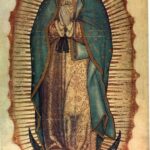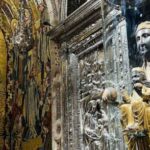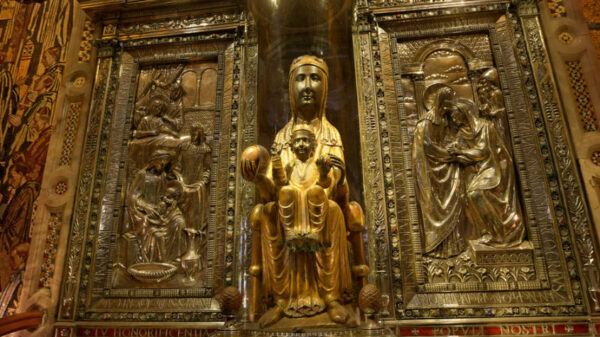
The Black Madonna, a revered icon in Barcelona, captivates visitors with her striking appearance and rich history. This mysterious statue, found in the Monastery of Montserrat, has sparked various interpretations and theories over the centuries.
As we explore the question of Why is the Black Madonna Dark? Unveiling the Mystery Behind Barcelona's Iconic Statue, we delve into the cultural, historical, and artistic influences that have shaped her image. Understanding her significance offers insights into the complex tapestry of faith and identity in Catalonia.
The Fascinating History of the Black Madonna in Barcelona
The history of the Black Madonna in Barcelona is as captivating as the statue itself. Believed to date back to the 12th century, she was discovered in a cave by shepherds who experienced a series of miraculous events. This origin story has cemented her status as a symbol of divine protection and grace for the people of Catalonia.
Throughout the centuries, the Black Madonna has inspired countless religious and artistic movements. Various artists have interpreted her image, leading to a diverse representation across different mediums. Notable influences include:
- Gothic sculptures in the 13th century
- Renaissance paintings that celebrated her mystique
- Modern interpretations that explore her cultural significance
Interestingly, the Black Madonna's popularity extends beyond religious circles as she has become a symbol of Catalan identity. Many pilgrims visit Montserrat to seek her blessings, particularly during significant cultural events. This connection not only highlights her spiritual importance but also her role in fostering a sense of community among Catalans.
As a testament to her enduring legacy, the Black Madonna is also the subject of numerous festivals and celebrations throughout the year. These events often include:
- Processions and liturgical ceremonies
- Art exhibitions showcasing her influence
- Cultural performances that interpret her story
Cultural Significance of the Black Madonna's Dark Skin
The dark skin of the Black Madonna holds significant cultural meaning, representing a blend of different artistic and spiritual traditions. Throughout history, her appearance has been interpreted in various contexts, which has contributed to her mystique. This unique representation resonates with many, as it reflects the diverse influences that shape Catalan identity.Her color symbolizes a connection to the earth and the divine, embodying the nurturing aspects of motherhood and spirituality.
Moreover, the depiction of the Black Madonna serves to challenge conventional norms within religious iconography. As a result, she has become a powerful symbol for marginalized communities. This aspect is particularly important in the context of race and representation, as her dark skin invites reflections on faith, culture, and identity in a predominantly white European landscape. The Black Madonna stands as a reminder that spirituality transcends color and origin.
In various interpretations, the Black Madonna’s dark skin is also seen as a representation of the indigenous people of Europe, blending the sacred with the cultural. This notion strengthens her appeal as a figure of resistance and resilience. The richness of her symbolism resonates with many who seek to reclaim their heritage, making her an enduring icon across generations.
Ultimately, the cultural significance of the Black Madonna's dark skin is multifaceted, encompassing themes of spirituality, identity, and community. It invites a deeper exploration of how art reflects societal values and beliefs. Her legacy continues to inspire art, literature, and religious practices that honor her unique status and profound impact on Catalan culture.
Exploring the Myths and Legends Surrounding the Black Madonna
The Black Madonna is surrounded by a rich tapestry of myths and legends that have evolved over centuries. Many believe that her dark skin symbolizes more than just physical appearance; it embodies the mysteries of faith and the divine feminine. This has led to fascinating interpretations, including:
- Her connection to ancient goddesses and fertility symbols.
- The belief that she offers protection to the marginalized and oppressed.
- Legends suggesting that she embodies the spirit of Catalonia itself.
One of the most enduring legends involves the origins of the Black Madonna, which recounts that shepherds stumbled upon her in a cave after witnessing miraculous events. This discovery, infused with divine intervention, has become a cornerstone of her narrative, illustrating themes of hope and miraculous rebirth. Many locals attribute personal and communal transformations to her presence.
Additionally, the Black Madonna’s influence extends beyond spiritual realms; she has become a potent cultural symbol. Various stories depict her as a unifying force during times of strife in Catalonia, often invoked during pivotal historical moments. Her legend serves as a reminder of resilience and the enduring spirit of the Catalan people.
Through centuries of adoration and reverence, the Black Madonna has inspired numerous cultural expressions. Festivals, art, and literature reflect her impact, revealing how she challenges societal norms and inspires creativity. The legends surrounding her continue to evolve, ensuring that her mystique remains vibrant in contemporary discussions about identity and spirituality.
The Symbolism Behind the Dark Features of the Black Madonna
The Black Madonna's dark features carry profound symbolism, representing not only her unique identity but also the rich cultural tapestry of her time. Traditionally, her dark skin is interpreted as a manifestation of the divine feminine, connecting her to nature and motherhood. This portrayal resonates deeply within the context of Catalan spirituality, where she embodies the nurturing qualities of the earth and the sacred.
Furthermore, the dark features of the Black Madonna challenge conventional religious iconography, transforming her into a powerful symbol of inclusivity. Her image invites discussions on race and representation in spiritual contexts, encouraging a broader understanding of faith that transcends color. This aspect has made her an emblematic figure for marginalized communities seeking representation within religious narratives.
In addition, her dark skin is often interpreted as a tribute to the indigenous cultures of Europe, symbolizing resilience and a connection to the ancestors. This portrayal strengthens her significance as a figure of resistance, appealing to those who strive to reclaim their heritage. The Black Madonna thus serves not only as a spiritual guide but also as a reflection of the diverse identities that shape contemporary Catalonia.
Ultimately, the symbolism behind the Black Madonna's dark features invites a deeper exploration of the intersection between faith, identity, and community. Her legacy continues to inspire generations, reflecting the dynamic relationship between spirituality and cultural expression in a rapidly changing world. The enduring mystery surrounding her image serves as a reminder of the richness and complexity inherent in the stories we tell about ourselves.
Why the Color of the Black Madonna Matters: A Deep Dive
The color of the Black Madonna is not merely an aesthetic choice; it carries profound spiritual and cultural implications. Her dark complexion reflects a rich blend of influences, representing the intersection of various traditions that have shaped her narrative over the centuries. This uniqueness invites viewers to consider the complexities of identity, ultimately fostering a dialogue around faith and representation in a multicultural society.
Moreover, the Black Madonna's dark features challenge the predominantly Eurocentric notions of beauty and divinity. By embodying a form that diverges from the norm, she serves as a powerful symbol for marginalized communities, emphasizing the importance of inclusivity within religious discourse. This aspect resonates particularly in contemporary discussions about race and representation, highlighting the need for diverse portrayals in religious iconography.
Additionally, her dark skin is often linked to the earth and nature, symbolizing fertility and the nurturing aspects of motherhood. This connection reinforces her role as a protector and a source of strength for many believers. Her representation as a figure of resilience further cements her status in Catalonia as an emblem of community and solidarity amidst historical struggles.
Ultimately, the significance of the Black Madonna's dark color extends beyond her physical appearance; it embodies a deep cultural narrative that invites exploration of the themes of spirituality, identity, and heritage. As a revered figure in Barcelona, her story continues to inspire and challenge societal norms, making her an enduring symbol of hope and unity for generations to come.
Unraveling the Artistic Interpretations of the Black Madonna's Appearance
The artistic interpretations of the Black Madonna's appearance vary widely, reflecting the diverse cultural influences that have shaped her image over time. Artists have often depicted her using rich, dark hues, which some argue symbolize strength and resilience. This color choice resonates deeply within the context of her role as a protector and a maternal figure, reinforcing the connection between femininity and spirituality.
Throughout the centuries, the portrayal of the Black Madonna has been influenced by various artistic movements, leading to a rich tapestry of representations. Among the most notable interpretations are:
- Gothic Art: Emphasized her mysterious aura through intricate carvings and dramatic expressions.
- Renaissance Paintings: Celebrated her as a figure of divine beauty, often surrounded by symbolic elements that hint at her cultural significance.
- Contemporary Works: Explore themes of identity, race, and inclusion, challenging traditional narratives within religious contexts.
Moreover, the Black Madonna's dark features allow for an exploration of the intersection between traditional iconography and modern values. Her image serves as a canvas for artists to address contemporary issues such as race, gender, and representation. This evolution in artistic expressions ensures that she remains a relevant figure in both religious and cultural discourses.
In essence, the Black Madonna's appearance is not just an artistic choice but a complex symbol that invites ongoing dialogue about cultural identity and spiritual representation. By understanding these interpretations, we can appreciate her impact on both art and society, highlighting the profound connections between faith, community, and self-expression.
 The Enigma Unveiled: Exploring Why the Black Madonna is Famous
The Enigma Unveiled: Exploring Why the Black Madonna is Famous The Mystique Behind the Black Lady of Montserrat: Unraveling the Enigma
The Mystique Behind the Black Lady of Montserrat: Unraveling the Enigma Why Should I Go to Montserrat? Discover the Enchanting Beauty of Barcelona's Majestic Mountain
Why Should I Go to Montserrat? Discover the Enchanting Beauty of Barcelona's Majestic MountainIf you want to know other articles similar to Why is the Black Madonna Dark? Unveiling the Mystery Behind Barcelona's Iconic Statue you can visit the category WHERE YOU CAN GO.
Leave a Reply










Read more!